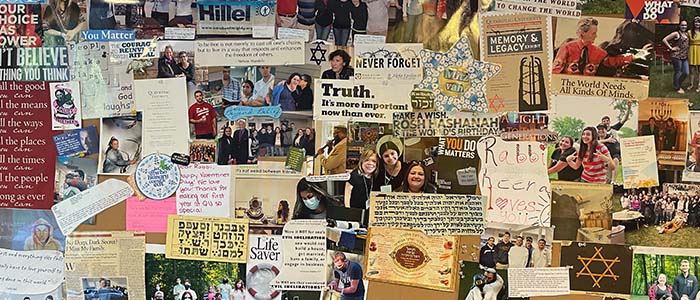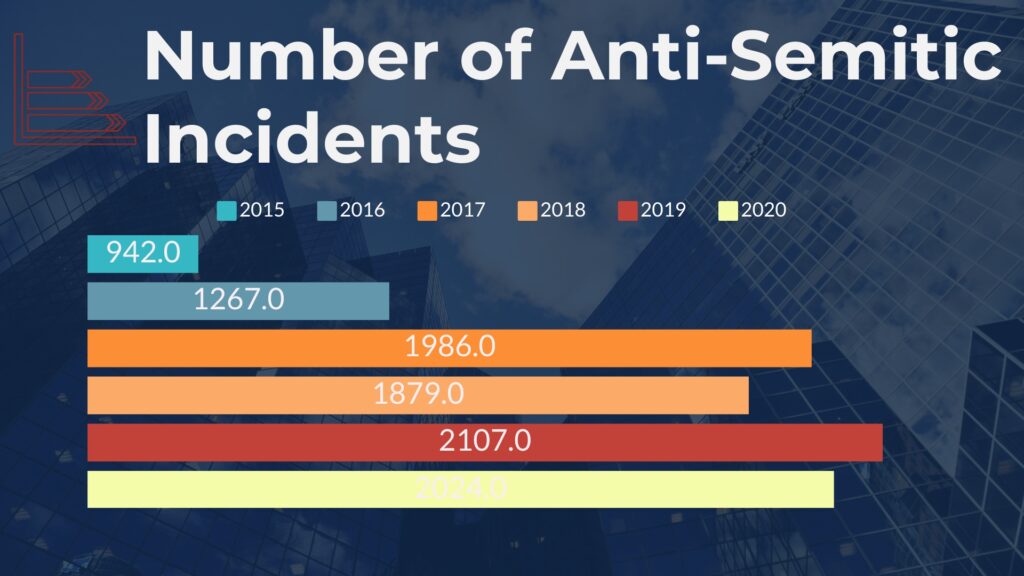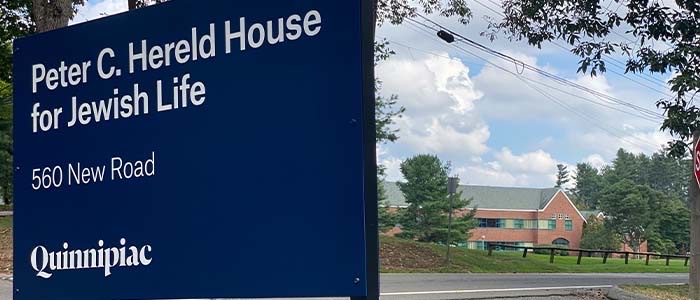Quinnipiac University students reflect on the holiest day of the Jewish year.
Rabbi Reena Judd, who serves the Quinnipiac University community, prepared for Shabbat Friday evening.
“Everything starts with the candles,” Judd said.
While students meet at the Peter C. Hereld House for Jewish Life not only for special events, prayer or to be surrounded by spirits like Judd; it is also an opportunity for more community members to meet in familiar spaces.
As the holiest day of the year approaches for Jewish people, many look forward to the recurring traditions celebrated amongst family and friends.

Although some students come from small Jewish communities where many haven’t participated in fasting, more students have found peers who observe Rosh Hashanah and Yom Kippur. Haley Organ, a second-year theatre major, noted the difference in her own life.
“I go to services, some of the rest of my family doesn’t really do it,” Organ said. “I think for older people, if they are super religious and if that’s how they’re raised they will continue to go. I think a lot of people don’t really care.”
Organ’s beliefs on the generational differences of the celebratory seasons comes from her foundational upbringing.
“I think a lot of people our age, part of the reason why we continue to go is because of the community,” Organ said.
From going to temple youth groups, Jewish camp, and having her own community within the temple, Organ differentiated her communal rapport from high school to the temple.
“I had my own groups there and it’s the groups that bring you back and push you further into things,” Organ said. “It wasn’t like in high school where you graduate and never see these people again.”
By actively sharing dances and events with community members, Organ feels the difference in communities.
“I think it’s the people that keep you coming back,”
– Haley Organ
Not only is the generational divide observed by Organ and peers, but Judd acknowledges the differences amongst observers.
“There are plenty of Jews who just can’t deal with it and don’t,” Judd said.
With the downsizing of communities becoming more present, Judd has observed that some choose to immerse themselves in other sectors of Judaism, while the older generation passing on results in children living somewhere else.
“You grow up in these traditions and people who grow up orthodox and leave their community don’t have much to do with their family origin and it’s very very lonely,” Judd said.
According to Global Religious Futures, “As of 2010, there were about 14 million Jews around the world, representing 0.2% of the global population…The share of the world’s population that is Jewish – 0.2% – is expected to remain about the same in 2050 as it was in 2010.”
“We get kosher meat, but there’s no kosher caterings in the neighborhood. They died because the Jews are dying.”
Rabbi Reena Judd, who serves the Quinnipiac community.
Despite the population predicted to remain stagnant in 29 years, the lack of an increase of Jewish people presents current issues.
“Chartwells (Quinnipiac’s dining partner) isn’t kosher,” Judd said. “We get kosher meat, but there’s no kosher caterings in the neighborhood. They died because the Jews are dying.”
Although the lack of Kosher caterings limit options for Jewish Hamden residents, many look forward to what comes after breaking the fast.
“My favorite Yom Kippur tradition is going to break the fast and breaking my long 24 day pass with a bagel,” Emily K, a third-year theatre major said. “Bagels are essential, a nice bagel with cream cheese.”
As K’s family starts with dessert, one of her favorite meals to break with comes from a family tradition.
“For Rosh Hashanah, we always go out for Chinese,” K said. “That was one of my grandparents’ favorites.”
Reminiscing on traditions, Organ shared another fond memory.
“For all the holidays, my grandmother will make soup,” Organ said. “She’ll make chicken and rice soup and will sometimes put matzo balls in it, it depends on how much energy she has.”

From apples and honey, challah bread to lox, the list goes on for favorite foods to break with. But breaking fast wouldn’t be such a special tradition without knowing why followers of the Jewish religion do so.
Yom Kippur marks the day the Jewish people will either have their name sealed in the Book of Life or not. This is based on the merit of one’s acts and generosity throughout the year.
On Yom Kippur, Jews fast for 24 hours as it serves as a way of reflecting and repenting sins, in hopes of a favorable final judgement.
This comes following a 10-day introspective period after Rosh Hashanah. This Thursday, Sept. 16, is when Yom Kippur falls this year. Rosh Hashanah started Sept. 6, and carried on into Sept. 7.
Rosh Hashanah is the celebration of life, the creation of the world and the new year. As mentioned before, a holiday favorite is apples and honey.
It’s a tradition passed down by Jewish ancestors that signifies apples as healing and honey to sweetly start the new year.
Rosh Hashanah and Yom Kippur are the Jewish religions’ holiest holidays, and for those enrolled at Quinnipiac University, though it may be difficult, celebrating them means a lot.
“As someone who isn’t a super religious Jew, I always enjoyed the high holidays because it was a two-week span where my whole family would go to services which made me feel good about my religion and what it meant to be Jewish,” said Jake Badian, second-year health sciences major.
Though the high holiday season is one of joy, love and family. It is hard to overlook the steady rise in antisemitism across the nation.
A 2021 report by the Anti-Defamation League, shows 942 incidents of antisemitism in 2015. That number has since jumped up to 1,986 in 2017 and into the 2,000’s for the past two years.

In President Joe Biden’s Rosh Hashanah speech he addressed these concerns by saying the holiday is a reaffirmation that Americans are endowed.
“To give hate no safe harbor, and speak out with clarity and conviction against antisemitism wherever and however it manifests,”
– President Joe Biden
As the Jewish high holidays take place, it is important to cherish the time spent with friends and family, but also for Jews to embrace their religion.
“It is important for college students to keep their faith and not succumb to antisemitism,” Badian said.
As for Quinnipiac students, keeping up with their faith is as easy as walking down the street to the Peter C. Hereld Jewish House for services, food and leisure.

